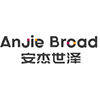-
What has been your jurisdiction’s historical level of interaction with the WTO (e.g. membership date for the GATT/WTO, contribution to initiatives, hosting of Ministerials, trade policy reviews)?
Australia was one of the 23 original signatories of GATT in 1947, became a founding member of World Trade Organization (“WTO”) on 1 January 1995 and remains an active member of the WTO to this day.1
Australia is a member of the Cairns Group, through which it actively pushed for agricultural trade reform during the Uruguay Round. Australia is an engaged participant in the fisheries subsidies negotiations and, along with Japan and Singapore, is a co-convenor of the E-commerce Joint Statement Initiative. Australia’s Ambassador to the World Trade Organization Ms Frances Lisson has chaired these negotiations. Australia also participates in the initiatives on investment facilitation and micro small and medium enterprises.2
Australia has not hosted a WTO Ministerial Conference, but does actively engage with them.3 The Australian Government’s intention is to continue to pursue agricultural trade reform, conclude negotiations on fisheries subsidies, and renew the moratorium on imposing customs duties on electronic transmissions. Australia also encourages new discussions on key trade-related global challenges affecting Australia, such as industrial policy, environmental sustainability, and economic inclusion.4
Footnote(s):
1 https://www.wto.org/english/thewto_e/countries_e/australia_e.htm
3 https://www.wto.org/english/thewto_e/minist_e/minist_e.htm
-
Are there any WTO agreements to which your jurisdiction is not party (e.g. Government Procurement Agreement)? Is your jurisdiction seeking to accede to these agreements?
Australia is not a party to the following agreements:
- Agreement on Trade in Civil Aircraft, although Australia holds Observer status in the Committee on Trade in Civil Aircraft; 5
- Agreement on Trade in Pharmaceutical Products, which is a sectoral agreement, as it was signed and applied to group participants rather than all WTO members.6
Footnote(s):
5 https://www.wto.org/english/tratop_e/civair_e/civair_map_e.htm
6 https://www.wto.org/english/tratop_e/pharma_ag_e/pharma_agreement_e.htm
-
Is your jurisdiction participating in any ongoing WTO negotiations (e.g. E-Commerce Joint Initiative) and what has been its role?
Australia has participated in the E-Commerce Joint Initiative, the Investment Facilitation for Trade Joint Initiative and the Informal Working Group on Micro, Small and Medium-sized Enterprises (“MSMEs”). Australia’s role in these initiatives are discussed below.
Joint Statement Initiative on E-commerce
As noted, Australia is one of the co-convenors of the E-Commerce Joint Initiative. Fittingly, it has been involved in the follow stages of the initiative:
- During the 11th Ministerial Conference in December 2017, Australia along with other 70 WTO members agreed to initiate exploratory work towards future WTO negotiations on trade-related aspects of e-commerce;
- In January 2019, Australia with other 75 WTO members confirmed in a joint statement their intention to commence these negotiations. They agreed to “seek to achieve a high standard outcome that builds on existing WTO agreements and frameworks with the participation of as many WTO members as possible”.
- On 26 July 2024, the Co-conveners confirmed in a statement on behalf of the participants that after five years of negotiations, participants had achieved a stabilised text.7
Senator the Hon Don Farrell stated that “WTO Members delivered important outcomes on dispute settlement and e-commerce which have set the WTO on a path to modernisation”. Australia also supported the renewal of the e-commerce moratorium, which has underpinned growth of the digital economy for over 25 years. This policy prevents countries from imposing customs duties on electronic transmissions, such as digital products and services like software, e-books, movies, and music.
Joint Initiative on Investment Facilitation for Development
On 25 February 2024, Ministers representing 123 WTO members (including Australia) issued a Joint Ministerial Declaration marking the finalisation of the Investment Facilitation for Development (“IFD”) Agreement and made it available to the public. Ministers also issued a submission asking for the 13th WTO Ministerial Conference (“MC13”), taking place in Abu Dhabi on 26-29 February, to incorporate the IFD Agreement into Annex 4 of the Marrakesh Agreement Establishing the WTO. Australian government said this is one of Australia’s trade priorities.8 In particular, Senator The Hon. Tim Ayres — Assistant Minister for Trade of Australia said that:
“[t]his new Agreement will help developing countries attract and benefit from global investment. This is a significant moment for the WTO, showing it can continue to innovate and deliver new international trade and investment rules.”
The IFD text-based negotiations were launched in September 2020, building on over three years of preparatory work since a group of 70 WTO members called in December 2017 at the 11th Ministerial Conference (“MC11”) in Buenos Aires for starting “structured discussions” aimed at developing a global framework on investment facilitation for development.9
Informal Working Group on MSMEs
88 WTO members (including Australia) signed a statement at the WTO’s 11th Ministerial Conference declaring their intention to create an Informal Working Group on MSMEs to explore ways in which WTO members could better support MSMEs’ participation in global trade. The Informal Working Group met for the first time in March 2018.
The MSME package of recommendations and declarations, adopted in December 2020, was sponsored by 97 WTO members.10
Footnote(s):
7 https://www.wto.org/english/tratop_e/ecom_e/joint_statement_e.htm
9 https://www.wto.org/english/news_e/news24_e/infac_25feb24_e.htm
-
Has your jurisdiction engaged in the WTO dispute settlement system in the past 5 years? If so, in which disputes and in which capacity (as a party to a dispute or as a third party)?
Australia has been the complainant in four disputes in the last five years:
- DS602: China – AD/CVD on Wine (Australia);
- DS598: China – AD/CVD on Barley (Australia);
- DS580: India – Sugar and Sugarcane (Australia); and
- DS537: Canada – Measures Governing the Sale of Wine (Australia).
In contrast, Australia has been a respondent in only two disputes in the same period:
- DS603: Australia – AD/CVD on certain products (China); and
- DS529: Australia — Anti-Dumping Measures on A4 Copy Paper (Indonesia).
As an interested third party, Australia has participated or reserved its rights in 17 disputes, including, most recently DS624: EU – Citrus Fruit II (South Africa).
-
Has your jurisdiction expressed any views on reform of the WTO, in particular, the dispute settlement system and the Appellate Body?
Australia supported efforts to fix the WTO dispute settlement system during the MC13. In the Minutes of the Heads of Delegation meeting on 30 May 2024, the Australian representative emphasised that the right to appeal and review is crucial, and retaining an appeal/review tier in a reformed system is therefore important to Australia. Several reforms are suggested, including:
- Streamlining the appeal process to adhere to time limits and possibly setting word limits on submissions.
- Enhancing the interim review at the panel stage.
- Setting clear boundaries for the roles of adjudicators, including the scope and standard of review.11
Australia is also a party to the Multi-Party Interim Appeal Arbitration Arrangement.
Footnote(s):
11 https://docs.wto.org/dol2fe/Pages/SS/directdoc.aspx?filename=q:/WT/GCDSR/M1.pdf&Open=True
-
What are the key bilateral and/or regional free trade agreements (FTAs) in force for your jurisdiction and from which dates did they enter into force?
Australia is a party to 18 free trade agreements (“FTAs”), the majority of which are bilateral FTAs. Key bilateral FTAs for Australia include:
- Australia-United Kingdom Economic Cooperation and Trade Agreement (“ECTA”) – entered into force on 31 May 2023;
- China-Australia Free Trade Agreement (“ChAFTA”) – entered into force on 20 December 2015; and
- Australia-United States Free Trade Agreement (“AUSFTA”) – entered into force 1 January 2005.
Key multilateral agreements for Australia include:
- Regional Comprehensive Economic Partnership Agreement (“RCEP”) – entered into force for Australia on 1 January 2022;
- Comprehensive and Progressive Agreement for Trans-Pacific Partnership (“CPTPP”) – entered into force 30 December 2018; and
- ASEAN-Australia-New Zealand Free Trade Agreement (“AANZFTA”) – entered into force for Australia on 1 January 2010.
A full list of the FTAs to which Australia is a partner is available on the Federal Department of Defence website available here.
-
Is your jurisdiction currently negotiating any FTAs (or signed any FTAs that have not yet entered into force) and, if any, with which jurisdictions? What are your jurisdiction’s priorities in those negotiations (e.g. consolidating critical mineral supply chains, increasing trade in financial services, etc.)? For both FTAs under negotiation and signed FTAs, when are they expected to enter into force?
Australia is currently negotiating three FTAs. These are the:
- Australia-European Union Free Trade Agreement;
- Australia-India Comprehensive Economic Cooperation Agreement (“CECA”); and
- Australia-UAE Comprehensive Economic Partnership Agreement (“CEPA”).
Negotiations between Australia and the European Union have been underway since June 2018 but have stalled. The EU has been unwilling to open EU markets to Australian meat and Australia has been unwilling to restrict the labelling of Australian produce (i.e. via protective geographical indications, i.e. which restrict the use of names such as “feta” and “prosecco” for use by products originating from certain locations).
The Australia-India CECA has been under negotiation since May 2011. Negotiations were suspended between 2016 and 2021 while other regional agreements took priority, but resumed in 2021 with negotiations for the Australia-India Economic Cooperation and Trade Agreement (“ECTA”), which is seen as a “stepping stone” towards a comprehensive CECA.12 Upon the ECTA entering into force in December 2022, CECA negotiations have resumed, with the aim of building on and strengthening the ECTA. The specific aims of the CECA are not known; however, it is likely that the CECA will address digital trade, government procurement and new areas of cooperation.13
The Australia-UAE CEPA is the most recent FTA proposal, with negotiations commencing in December 2023. The UAE is a key market for Australia with respect to exports of alumina, meat, oil seeds and higher education.14 Given the recency of negotiations, it is not known what exact priorities will come into play. At this stage, the Australian Government has indicated that the objectives of an agreement are, among other things, to increase two-way investment, expand trade in goods, facilitate digital trade and secure competitive opportunities.
Finally, the Australia-Gulf Cooperation Council (GCC) Free Trade Agreement is technically also “under consideration”. Negotiations first commenced in July 2007, but were paused in June 2009. While interest in the Australia-GCC FTA was renewed in 2021, it appears that the Australia-UAE CEPA has taken priority.
Footnote(s):
12 https://www.dfat.gov.au/sites/default/files/business-envoy-august-2024.pdf, page 3.
13 Ibid.
14 Ibid.
-
Which five countries are the biggest trading partners for your jurisdiction in relation to each of exports and imports and which goods or services are particularly important to your jurisdiction’s external trade relationships?
Australia is unusual among developed countries, in the sense that its main exports are raw commodities. Australia’s top three exports being iron ore (20.3%), coal (15.3%), and natural gas (11.1%), which together make up nearly half (46.7%) of the country’s total exports. 15 Other significant mineral exports include gold (4.2%), crude minerals (2.8%), crude petroleum (1.7%), aluminium ores (1.5%), and copper ores (1%).16 Agricultural products also play a crucial role, with wheat being Australia’s 8th largest export (2.1%), beef the 10th (1.7%).17
In terms of services, education-related travel services ranked 4th and accounted for 7.1% of total exports, followed by personal travel (2.8%). Other notable service exports include charges for intellectual property and professional services.
In 2023, Australia’s top five trading partners were China (26.3%), Japan (9.7%), the United States (7.9%), South Korea (5.7%) and India (4.0%).18 China remains Australia’s largest trading partner. Over the 5 years, trade with China has grown by 8.2% on an annualised basis.
Also, if we consider the EU as a single entity, the EU will rank as Australia’s third-largest two-way trade partner. The EU’s trade with Australia has remained relatively flat over the past 5 years, with minimal growth (1.7%).
Footnote(s):
15 https://www.dfat.gov.au/sites/default/files/australias-goods-and-services-by-top-25-exports-2023.pdf
16 https://www.dfat.gov.au/sites/default/files/australias-goods-and-services-by-top-25-exports-2023.pdf
17 https://www.dfat.gov.au/sites/default/files/australias-goods-and-services-by-top-25-exports-2023.pdf
-
What are the three most important domestic and three most important international developments that are likely to have the biggest impact on your jurisdiction’s trade profile and priorities?
The three most important domestic developments for Australia’s trade profile and priorities are:
- AUKUS-minded reforms to Australia’s export control framework
In April 2024, the Defence Trade Controls Act 2012 was reformed, significantly expanding Australia’s export controls. This was done to facilitate enhanced defence trade and information sharing with Australia’s AUKUS partners, the United States and the United Kingdom, as well as harmonise Australia’s export controls framework with the US. Post-reform, three additional types of conduct are regulated: the supply of controlled technology to foreign persons or entities within Australia; the supply of certain goods and technology once it leaves Australia, from within (deemed re-supply) and between foreign countries (deemed re-export) or to foreign persons; and the provision of certain services (i.e. assistance and training) relating to controlled goods and technology to foreign nationals outside Australia. Other changes were made to the authorisation and exemption rules.
- The introduction of a “Future Made in Australia” agenda
Australia’s proposed Future Made in Australia agenda aims to attract and promote private sector investment in renewable energy that facilitates Australia’s net zero transition, strengthens Australia’s economic security and creates jobs throughout the country. The Future Made Australia Bill 2024 is currently before Parliament. If passed, it will establish a National Interest Framework to support consideration and decision making in public investment that facilitates private sector investment in the national interest. Key areas of investment include renewable hydrogen, critical minerals processing, green metals (iron, steel, alumina and aluminium), low carbon liquid fuels and clean energy manufacturing. With respect to trade, one of the underlying purposes appears to be to re-engineer supply chains to make them more resilient, which appears to involve either on-shoring or friend-shoring manufacturing capabilities.
- Improving relationship with China
As noted, China is Australia’s largest trading partner, despite significant strain to that relationship between 2020 and 2022. However, there have been concrete signs of resolution across 2024. In particular, the Panel Report in Australia – Anti-Dumping Measures and Countervailing Measures on Certain Products from China (DS603) was adopted in April 2024, with the Panel finding that measures Australia had imposed on railway wheels, stainless steel sinks and wind towers from China were inconsistent. Similarly, the Chinese government completed its review of anti-dumping and countervailing duties on Australian wine in March 2024, assessing that there was no longer a need to impose the measures Subsequently, the related WTO dispute, China – Anti-Dumping and Countervailing Duty Measures on Wine from Australia (DS602), was concluded with the parties circulating a notification of a mutually agreed solution in April. Further, in October, the two governments agreed a timetable for the full resumption of Australian live rock lobster exports by the end of the year.
-
Has your jurisdiction taken any specific domestic measures to address sustainability issues in international supply chains, for example in relation to forced labour, human rights and environmental issues? Is it seeking to address these issues in any FTAs or other international agreements?
In addition to the Future Made in Australia Agenda, discussed at question 9, Australia has taken several actions to address sustainability in supply chains, as part of a broader focus on environmental, social and governance compliance.
The primary piece of legislation addressing supply chain due diligence is the national Modern Slavery Act 2018 (Cth) (“MSA”). The MSA imposes obligations on businesses and other entities to report on modern slavery risks in their operations and supply chains, and the actions taken to address these risks. In this context, “modern slavery” refers to serious exploitation, which is things such as human trafficking, slavery, servitude, forced labour and marriage, debt bondage and certain forms of child labour. Annual reporting obligations attach to entities that are either Australian entities or carrying on business in Australia, with an annual consolidated revenue of AUD100 million or more. Failure to comply with reporting obligations may result in a non-compliant entity being “named and shamed”. There has been a push to introduce financial penalties for non-compliant entities, to encourage greater compliance with the MSA. The inaugural Australian Anti-Slavery Commissioner, Chris Evans, is expected to play a role in shaping the implementation of future modern slavery reform and encouraging greater compliance with the MSA.
From an environmental sustainability perspective, Australia has recently introduced the New Vehicle Efficiency Standard (“NVES”). The NVES is akin to similar vehicle emission caps that exist in other countries. In essence, from 1 July 2025, each vehicle supplier in Australia will have an average yearly Co2 target for the collective fleet of new vehicles they supply in Australia. Suppliers will receive credits for vehicles that meet or beat the target and receive debits for vehicles which fall short. Suppliers that remain in debit can make it up over the following two years, purchase credits from complying suppliers, or pay a penalty for each gram of Co2 above the target cap. Different caps exist for type 1 (passenger) and type 2 (light commercial) vehicles, with both categories of target caps being progressively lowered between 2025 to 2029.
In the international trade arena, Australia has also addressed sustainability issues in its FTAs. As an example, in the Australia-United Kingdom ECTA, the most recent FTA that has come in operation, chapter 22 addresses the “environment” outlining the objectives of the chapter are to “promote mutually support trade and environmental policies; promote high levels of environmental protection and effective enforcement of environmental laws; and enhance the capacities of the Parties to address trade-related environmental issues, including through cooperation.” In addition, chapter 21 addresses “labour”, covering each parties’ commitment to the ILO Declaration and the reduction of modern slavery practices in supply chains.
-
Is your jurisdiction taking any specific domestic measures to promote near-shoring/on-shoring for strategic goods (i.e. domestic subsidies, import tariffs, or export restrictions)? Is it seeking to address these issues in any FTAs or other international agreements?
As discussed in response to question 9, Australia’s Future Made in Australia agenda aims to promote the onshoring of goods, materials, investment and innovation relating to green energy, including critical minerals. The focus on critical minerals is further supplemented by the Critical Minerals Strategy 2023-2030 also aims to grow Australia’s critical minerals sector, with a particular focus on the strategically significant role that processing of critical minerals may play in Australia’s green energy transition.
More generally, Australia is a member of the Indo-Pacific Economic Framework (“IPEF”) and has signed the IPEF Supply Chain Agreement which, amongst other things, requires IPEF partner to develop sector specific action planes with the purpose of enhancing the resilience of IPEF supply chains.
-
What is the legal regime governing trade sanctions in your country? Has it evolved in response to ongoing geopolitical developments, such as the on-going crisis in Ukraine?
Australian imposes two forms of sanctions – United Nations Security Council (“UNSC”) sanctions and autonomous sanctions. UNSC sanctions are created by the UNSC as legally binding resolutions, which Australia then implements into national law in accordance with the federal Charter of the United Nations Act 1945 (Cth).
In contrast, autonomous sanctions are imposed unilaterally by the Australian Government as a matter of foreign policy, under the Autonomous Sanction Act 2011 (“ASA”) and related regulations. Autonomous sanctions regimes are either country-specific, such as the Russian sanctions regime, or thematic, such as the significant cyber incidents sanctions regime. These thematic sanctions are the Australian version of “Magnitsky-style” sanctions. Australia currently maintains 8 country-specific autonomous sanctions regimes and four thematic autonomous sanctions regimes.
The autonomous sanctions imposed in response by Russia’s invasion of Ukraine are by far the widest reaching and most complex sanctions regime. As a consequence, there have been several judicial review challenges to certain sanction prohibitions, which has resulted in judgements clarifying the interpretation and reach of autonomous sanctions laws. This has led to an evolution of the sanctions laws as well, as it has clarified Minister’s discretion for designating parties and has led to amendments to the ASA seeking to validate decisions that may have been legal erroneous.
-
Does your jurisdiction use trade remedies and, if so, what remedies are most commonly used? And in which jurisdictions and on which products are they most commonly applied?
Australia uses trade remedies including anti-dumping, countervailing and safeguard measures. The Anti-Dumping Commission investigates claims of material injury to Australian industries from dumped or subsidised imports.
Australia enthusiastically employs anti-dumping measures. As of writing, there are 46 active measures, including 37 dumping and 9 countervailing measures across 27 products. China is the most affected, with 22 dumping and 9 countervailing measures.
The Productivity Commission is Australia’s investigating authority for the imposition of safeguard measures. No investigations have been conducted in recent years. The most recent one was in 2013, Australia conducted two inquiries relating to imports of certain processed fruit products and canned tomatoes, and concluded that the safeguard measures were not imposed. As these are rarely used, we will not discuss them further.
-
What is the key legislation relating to anti-dumping duties, countervailing duties and safeguards? What are the authorities responsible for investigating and deciding whether these remedies are applied?
For anti-dumping and countervailing measures, Australia’s legal framework for anti-dumping and countervailing measures is primarily outlined in the Customs Act 1901, particularly in Volume 3. The Ministerial Direction on Material Injury 2012 provides further guidance.
Additional relevant legislation includes:
- Customs Tariff (Anti-Dumping) Act 1975: governs the imposition of anti-dumping duties.
- Customs Tariff (Anti-Dumping) Regulation 2013: outlines the methods for calculating interim dumping duties.
- Customs Regulation (International Obligations) 2015: includes guidance regarding the determination of costs and profits in determining normal values.
The Anti-Dumping Commission is the authority responsible for investigating claims of material injury to Australian industries from dumped or subsidised imports. The Commissioner of the Anti-Dumping Commission reports directly to the Minister for Industry, Science, and Technology, overseeing the investigation and decision-making processes.
-
What is the process for a domestic business and/or industry to seek trade remedies (i.e. key documentation, evidence required, etc.)? How can foreign producers participate in trade remedies investigations in your jurisdiction?
Domestic business to seek trade remedies
A domestic business or industry in Australia can apply for trade remedies, if they believe that imported goods are being dumped or subsidised by a foreign government, and because of that the Australian industry producing like goods is materially injured, threatened with material injury, or the establishment of such an industry has been or materially hindered.
To formally lodge an application, the business must comply with the following requirements in Section 269TB(4) of the Act:
- Formality: The application must be in writing, in a form approved by the Anti-Dumping Commission, and signed appropriately.
- Content: The application must include all the required information, as specified in the form, including details about the domestic industry, the alleged dumping or subsidisation, and evidence of injury caused.
- Support from industry: The application must be supported by a significant portion of the Australian industry producing like goods.
- Lodgement: The application must be lodged in the manner approved under the Act.
- Evidence: The applicant must provide some evidence that:
- Dumping or subsidisation is occurring.
- Material injury is being caused or threatened to the Australian industry due to the dumping or subsidisation.
Once the application is formally lodged, the Commission will review whether the application meets the legal and procedural requirements, and evaluate if there is an Australian industry producing goods similar to the imported goods alleged to be dumped or subsidised.
Within 20 days of receiving the formal application, the Commission will decide whether to reject the application or proceed with an investigation. If the Commission finds reasonable grounds for dumping or subsidisation and related injury, it will commence an investigation into the matter.
Foreign producers participate in investigations in Australia
If foreign producers have an interest in dumping or countervailing investigations, they can participate in trade remedies investigations in Australia through lodgement of written submissions and/lor completing official questionnaires.19 Interested parties, which include businesses, trade organisations and governments, can make submissions on the public record.
When an investigation begins, the Commission outlines the necessary information required from both importers and exporters, and also publishes an Anti-Dumping Notice (“ADN”) on their website, inviting interested parties to lodge their submissions. Investigations will focus on information on the volume, costs, selling prices of imports, and market conditions. The information is required to be provided within 37 days of the investigation’s initiation. These responses will usually be verified by the Commission.
Additionally, interested parties can support, refute, or expand upon matters raised by others during the investigation or respond to the Commission’s findings. These submissions must be lodged by the deadline stated in the relevant ADN or report. Extensions of time for submissions may be granted under exceptional circumstances if requested in writing before the deadline.
There are two main time periods for making submissions:
- Within 37 days from the publication of an ADN initiating the case.
- Within 20 days from the publication of the statement of essential facts.
Importers and exporters may also apply for a review or revocation of an anti-dumping measure if they believe it is no longer necessary or justified.
Footnote(s):
19 Strictly speaking, completing an exporter questionnaire is not mandatory, but failure to do so is likely to result in exporter being subject to a dumping margin worked out “having regard to all relevant information”. The result would tend to be a dumping margin that is punitively high.
-
Does your jurisdiction have any special regulations or procedures regarding investigation of possible circumvention or evasion of trade remedies? What are the consequences of circumventing or evading trade remedies?
The Commission is empowered to investigate the following “circumvention activities:
- assembly of parts in Australia;
- assembly of parts in a third country;
- export of goods through one or more third countries;
- arrangements between exporters;
- avoidance of the intended effect of duty; and
- slight modification of goods exported to Australia.
An anti-circumvention inquiry is conducted in accordance with a process similar to that outlined in response to question 15.
Where a circumvention activity is found to have occurred, the Minister has broad powers to amend the existing measures to address that activity – for example they may specify that different goods are to be subject to the original notice, that different countries are to be subject to the original notice and/or that different exporters are to be the subject of the original notice.
-
What are the substantive legal tests in your jurisdiction for the application of remedies? Does your jurisdiction apply a lesser duty rule and/or a public interest test in anti-dumping investigations? Are there any other notable features of your jurisdiction's trade remedies regime?
Legal tests
- Dumping test: whether the imported goods are being sold at a price lower than the normal value in the exporting country.
- Material injury test: the dumping is causing material injury (or threatens to cause injury) to the Australian industry. Material injury can include loss of market share, price suppression, reduced profitability, and employment effects.
- Causation of injury test: Before imposing any measures, a clear causal link must be established between the dumped imports and the injury to the Australian industry. It must be demonstrated that the dumping is causing, has caused, or threatens to cause material injury to an Australian industry producing like goods, or that it is significantly hindering the establishment of such an industry. The dumping does not need to be the sole cause of the injury.
- De minimis: An investigation will be terminated in relation to an individual exporter if the dumping margin of the exporter is negligible, i.e. less than 2 per cent.
Lesser duty rule
Yes, Australia applies a lesser duty rule in both anti-dumping and countervailing investigations. In most cases, the Minister is required to consider the desirability of specifying a lesser amount of duty, instead of the full dumping or subsidy margin, where the imposition of that lesser amount is sufficient to remove injury.
A lesser dumping duty may be imposed where the non-injurious price of the goods is less than the normal value of the goods. When the lesser duty rule applies, the sum of the export price and the interim dumping duty payable does not exceed the NIP.
Public interest test
Current Australian legislation does not include a public interest test, and it is not supported by the Australian industry. The Australian government has also opposed making a public interest test mandatory in WTO negotiations, as it could undermine the legal right to trade remedies and disrupt the balance between the rights of exporters and domestic industries.20
Footnote(s):
-
Is there a domestic right of appeal against the authority's decisions? What is the applicable procedure?
Interested parties have a right to apply for a review of that decision to the Anti-Dumping Review Panel (“ADRP”), within 30 days after a notice of the reviewable decision was first published on the Commission’s website.
To apply for a review, an application must be submitted to ADRP within 30 days of the decision’s publication by using the application form provided by ADRP. Amongst other things, this requires setting out the grounds for the appeal arguing that the reviewable decision was not the “correct of preferable” decision, and setting out what, in the applicant’s view, was the correct or preferable decision.21
After the application is lodged, the Review Panel may request applicants to attend a conference to obtain further information. Additionally, interested parties can make written submission to the ADRP within 30 days of the initiation of the review.
If the reviewable decision is a Ministerial decision, the Panel can only recommend that the decision be revoked and substituted with a new decision, or affirmed. The Minister does not necessarily need to accept these recommendations. For reviews of Commissioner decisions, the ADRP can either affirm the decision or revoke it and substitute a new decision.22
Parties aggrieved by a decision may also apply to the Federal Court of Australia for judicial review of that decision. Such review focusses only on the lawfulness of the decision – it is not a venue for arguing the facts. Judicial review is initiated by filing an originating application with the Federal Court Registry, the serving the sealed version on the respondent(s) – this must happen within 28 days of the decision being made. The process from there is generally determined by the parties, after the Court has set a date for hearing.
Footnote(s):
-
Has your jurisdiction's imposition of any trade remedies been challenged at the WTO? If so, what was the outcome? A general explanation of trends can be provided for jurisdictions involved in significant trade remedies dispute settlement.
Yes, Australia’s trade remedies have been challenged at the WTO on several occasions. The most recent disputes were:
- DS603: Australia — AD/CVD on Certain Products (China); and
- DS529: Australia — Anti-Dumping Measures on A4 Copy Paper (Indonesia).
Both these disputes related to Australia’s practices under ADA Article 2.2 and 2.2.1.1. In particular Australia’s practice of rejecting exporter’s costs records under Article 2.2.1.1 and replacing them with out-of-country proxy costs when determining the cost of production in the country of origin. In both instances, Australia’s practices were found to be inconsistent with the ADA articles. The use of out-of-country costs has been an ongoing Australian practice for over a decade – particularly with respect to Chinese-related anti-dumping investigations, but it has appeared investigations concerning goods from Italy and Indonesia. Panel Report in DS603 was only adopted on 26 April 2024, so there is limited data regarding how this practice may change. At a high-level DS603 does not offer a complete condemnation of the practice, however in theory it will be difficult to adopt it as a matter of course.
Other trade remedies disputes occurred over 20 years ago. In particular:
- DS126 Australia — Subsidies Provided to Producers and Exporters of Automotive Leather (United States);
- DS119 Australia — Anti-Dumping Measures on Imports of Coated Woodfree Paper Sheets (Switzerland);
- DS106 Australia — Subsidies Provided to Producers and Exporters of Automotive Leather (United States); and
- DS57 Australia — Textile, Clothing and Footwear Import Credit Scheme (United States).
-
What authorities are responsible for enforcing customs laws and regulations and what is their role?
Australian Border Force (“ABF”) enforces Australian customs laws, alongside other border and immigration laws, including the Customs Act 1901, Customs Tariff Act 1995, the Migration Act 1958, Australian Citizenship Act 2007 and Maritime Powers Act 2013. With respect to its customs responsibilities, ABF has the power to seize, inspect and destroy goods that do not comply with Australian customs laws, issue infringement notices and impose penalties on non-compliant entities. Serious breaches of customs law are enforced by the Australian Federal Police and the Office of the Commonwealth Director of Public Prosecutions.
-
Can importers apply for binding rulings from the customs authority in advance of an import transaction? How can customs decisions be challenged?
Importers can apply for the following advance rulings in relation to customs matters:
- Formal Tariff Advice – a ruling on the appropriate tariff classification for goods, issued prior to the subject goods are imported into Australia;
- Valuation Advice – a ruling on certain matters relating to the assessment of customs value (such as day of exportation, packing costs, transaction value, similar goods value) for the subject goods; and
- Origin Advice – a ruling on whether the subject goods qualify as “originating” from a particular country.
Advance rulings are issued at the request of the importer or someone acting on their behalf, such as a customs broker or legal representative, and are binding. However, the outcome of an advance ruling may be appealed via internal review. If an internal review is pursued, an ABF officer will assess the ruling and determine whether to uphold, vary or revoke the ruling.
A second right of appeal is available indirectly via the Administrative Review Tribunal. This appeal process is initiated via disputing the “payment of duty” at the tribunal, which itself could be based on a ruling. A third right of appeal is available at via the Federal Court if an importer can show that the tribunal’s decision was incorrect at law.
Alongside advance rulings, an importer can also apply for a Tariff Concession Order (“TCO”) for specific defined goods which, if issued, exempts those goods from import duty. The basis for issuing a TCO is that there is no Australian manufacturing industry producing goods that are substitutable to those being imported.
-
Where can information be found about import tariffs and other customs charges?
Information on Australia’s import tariffs and customs charges can be found at https://www.abf.gov.au/. The ABF’s website outlines requirements and procedures for importing goods in Australia, tariff classification, customs duties and other charges, taxes, tariff concessions and preferential treatment.
The ABF also maintains an online version of Australia’s tariff. The online tariff is available here https://www.abf.gov.au/importing-exporting-and-manufacturing/tariff-classification/current-tariff.
-
Does your jurisdiction have any of the following features: a. Authorised Economic Operator (AEO) or equivalent programme? b.Mutual recognition arrangements (MRAs) with other jurisdictions in relation to their AEO programmes? c. Suspension of duties on any goods imports (for example, for goods for which there is no domestic production)? d. Allowing goods imports valued below a certain amount to enter duty free (de minimis shipments)?
a. Authorised Economic Operator (AEO) or equivalent programme?
The Australian Trusted Trader (“ATT”) program provides Australian businesses with Authorised Economic Operator (“AEO”) status.
ATT status confirms that ABF has assessed the business against World Customs Organization standards, and has satisfied itself that the business engages in compliant trade practices.
Under the ATT program, accredited businesses benefit from simplified customs processes including priority processing (in relation to advance rulings and ruling reviews, duty drawback claims, applications for refunds and remission of import duties), priority treatment at the border and with Australia’s Mutual Recognition Arrangement (“MRA”) partners, duty deferral and simplified customs reporting processes.
b. Mutual recognition arrangements (MRAs) with other jurisdictions in relation to their AEO programmes?
Australia has adopted ten AEO Mutual Recognition Arrangements (“MRAs”). These MRAs are with the customs authorities of Canada, China, Hong Kong, India, Japan, New Zealand, South Korea, Singapore, Taiwan and Thailand.
Under the reciprocal arrangements, ATTs receive preferential treatment at the border, and ABF provides preferential treatment to AEOs from partner countries in Australia.
c. Suspension of duties on any goods imports (for example, for goods for which there is no domestic production)?
For non-Excise Equivalent Goods, the Duty Deferral Plus (“DDP”) scheme allows accredited ATTs to defer import duties, taxes and charges until the 21st day of the following month, in which they will become payable as a consolidated payment. The DPP scheme permits the deferral of:
- customs duty
- anti-dumping and countervailing duty;
- Wine Equalisation Tax;
- Luxury Car Tax;
- Import Processing Charge;
- The Wood Levy;
- Department of Agriculture, Fisheries and Forestry processing charges;
This scheme is related to the Deferred Goods and Services Tax (“DGST”) scheme, which permits the deferral of GST payable on taxable imports. ATTs must be participating in the DGST scheme to be eligible to participate in the DDP scheme.
Additionally, note our comments above regarding TCOs.
d. Allowing goods imports valued below a certain amount to enter duty free (de minimis shipments)?
Goods valued at or under AUD1,000 can generally be imported into Australia free of duties. However, this threshold does not apply to certain goods, such as tobacco, tobacco products and alcohol.
-
What free trade zones and facilities such as bonded warehouses are available in your jurisdiction?
Australia permits the deferral of imports duties via warehouses, such as private warehouses, general warehouses, provedores, flight catering bonds and duty-free stores. Warehouses allow for the long-term storage of goods subject to customs control and the deferral of payable duties and taxes. When goods are warehoused, only activities specified on the licence may be undertaken such as the storage, blending, unpacking/repacking and packaging of goods; however, any activities that involve “value adding” are not permitted. The requirement to pay import duties for warehoused goods becomes payable when the goods are “entered for home consumption”. The operator of a warehouse must be authorised to operate a warehouse and carry out its activities in accordance with applicable licence conditions.
Goods subject to customs control may also be stored in a depot short term. Licensed depots are for the temporary storage of customs-controlled goods that must be moved from a wharf or airport, but have not yet been exported (for exports) or cleared for “home consumption” (for imports). A licensed depot enables goods to be stored in a depot until the end of the month after they arrived at the depot. When goods are placed in a depot, only activities specified on the licence may be undertaken, such as the holding and unpacking of imported goods. The operator of a depot must be authorised to operate the depot and carry out its activities in accordance with applicable licence conditions.
Australia does not currently have any special economic zones or free ports.
-
What are the domestic scrutiny and transparency arrangements before and during negotiations for a trade agreement? What domestic ratification procedures are required once a trade agreement is concluded?
Australia has an established treaty-making process, which incorporates domestic scrutiny and ratification procedures. It comprises of the following six steps:
- Prior to formal negotiations commencing, the relevant Commonwealth minister (“lead minister”) must obtain a mandate to negotiate a treaty. Mandates are generally provided by the Minister for Foreign Affairs but may also be granted by Federal Cabinet. The Prime Minister and other ministers with portfolio interest must be informed of the treaty mandate;
- Formal treaty negotiation commences with the relevant lead federal agency consulting on the negotiation of the agreement, with other interested parties, including other federal agencies, state and territory governments and interested stakeholders. At this stage, interested persons and organisations can engage in the public consultation by making submissions.
- Once negotiations conclude, and the text of the treaty is finalised, the lead minister seeks agreement from the Minister for Foreign Affairs, the Attorney-General and other ministers with portfolio interest, that Australia become a party to the treaty and for the matter to be submitted to the Federal Executive Council for approval. Any treaty action, such as signing, ratifying, amending or withdrawing a treaty, requires approval from the Federal Executive Council, and the Prime Minister must be informed of same.
- After the Federal Executive Council approves the treaty, the treaty is signed by Australia’s representative, usually the Prime Minister or Minister for Foreign Affairs, but a different representative may be authorised to sign on behalf of Australia.
- When the treaty is signed, it is tabled in both Houses of Parliament for scrutiny by the Joint Standing Committee on Treaties. The committee’s consideration of the treaty will cumulate in a report, which recommends whether binding national treaty action should be taken. There is a more streamlined Parliamentary scrutiny process for minor treaty actions (such as technical treaty amendments).
- Once the report recommends binding action to be taken, ratification arrangements for the treaty to enter into force are made. This includes informing other parties that all necessary domestic procedures for the treaty to enter into force have occurred, and that Federal Executive Council approval has been obtained for Australia to deposit the relevant instrument of ratification. The ratification instrument is then deposited, finalising the treaty-making process.
-
What are the domestic procedures for local traders to request the government take action against measures of other jurisdictions that are inconsistent with WTO and/or FTA rules?
There are limited domestic procedures that enable local traders to argue against measures imposed in other jurisdictions that are inconsistent with the WTO and/or FTA rules. Outside of Australia’s trade remedy framework, local traders may bring their trade concerns to the Department of Foreign Affairs and Trade, for further consideration. The Australian Government may then pursue further action, depending on the severity of non-compliance.
Australia: International Trade
This country-specific Q&A provides an overview of International Trade laws and regulations applicable in Australia.
-
What has been your jurisdiction’s historical level of interaction with the WTO (e.g. membership date for the GATT/WTO, contribution to initiatives, hosting of Ministerials, trade policy reviews)?
-
Are there any WTO agreements to which your jurisdiction is not party (e.g. Government Procurement Agreement)? Is your jurisdiction seeking to accede to these agreements?
-
Is your jurisdiction participating in any ongoing WTO negotiations (e.g. E-Commerce Joint Initiative) and what has been its role?
-
Has your jurisdiction engaged in the WTO dispute settlement system in the past 5 years? If so, in which disputes and in which capacity (as a party to a dispute or as a third party)?
-
Has your jurisdiction expressed any views on reform of the WTO, in particular, the dispute settlement system and the Appellate Body?
-
What are the key bilateral and/or regional free trade agreements (FTAs) in force for your jurisdiction and from which dates did they enter into force?
-
Is your jurisdiction currently negotiating any FTAs (or signed any FTAs that have not yet entered into force) and, if any, with which jurisdictions? What are your jurisdiction’s priorities in those negotiations (e.g. consolidating critical mineral supply chains, increasing trade in financial services, etc.)? For both FTAs under negotiation and signed FTAs, when are they expected to enter into force?
-
Which five countries are the biggest trading partners for your jurisdiction in relation to each of exports and imports and which goods or services are particularly important to your jurisdiction’s external trade relationships?
-
What are the three most important domestic and three most important international developments that are likely to have the biggest impact on your jurisdiction’s trade profile and priorities?
-
Has your jurisdiction taken any specific domestic measures to address sustainability issues in international supply chains, for example in relation to forced labour, human rights and environmental issues? Is it seeking to address these issues in any FTAs or other international agreements?
-
Is your jurisdiction taking any specific domestic measures to promote near-shoring/on-shoring for strategic goods (i.e. domestic subsidies, import tariffs, or export restrictions)? Is it seeking to address these issues in any FTAs or other international agreements?
-
What is the legal regime governing trade sanctions in your country? Has it evolved in response to ongoing geopolitical developments, such as the on-going crisis in Ukraine?
-
Does your jurisdiction use trade remedies and, if so, what remedies are most commonly used? And in which jurisdictions and on which products are they most commonly applied?
-
What is the key legislation relating to anti-dumping duties, countervailing duties and safeguards? What are the authorities responsible for investigating and deciding whether these remedies are applied?
-
What is the process for a domestic business and/or industry to seek trade remedies (i.e. key documentation, evidence required, etc.)? How can foreign producers participate in trade remedies investigations in your jurisdiction?
-
Does your jurisdiction have any special regulations or procedures regarding investigation of possible circumvention or evasion of trade remedies? What are the consequences of circumventing or evading trade remedies?
-
What are the substantive legal tests in your jurisdiction for the application of remedies? Does your jurisdiction apply a lesser duty rule and/or a public interest test in anti-dumping investigations? Are there any other notable features of your jurisdiction's trade remedies regime?
-
Is there a domestic right of appeal against the authority's decisions? What is the applicable procedure?
-
Has your jurisdiction's imposition of any trade remedies been challenged at the WTO? If so, what was the outcome? A general explanation of trends can be provided for jurisdictions involved in significant trade remedies dispute settlement.
-
What authorities are responsible for enforcing customs laws and regulations and what is their role?
-
Can importers apply for binding rulings from the customs authority in advance of an import transaction? How can customs decisions be challenged?
-
Where can information be found about import tariffs and other customs charges?
-
Does your jurisdiction have any of the following features: a. Authorised Economic Operator (AEO) or equivalent programme? b.Mutual recognition arrangements (MRAs) with other jurisdictions in relation to their AEO programmes? c. Suspension of duties on any goods imports (for example, for goods for which there is no domestic production)? d. Allowing goods imports valued below a certain amount to enter duty free (de minimis shipments)?
-
What free trade zones and facilities such as bonded warehouses are available in your jurisdiction?
-
What are the domestic scrutiny and transparency arrangements before and during negotiations for a trade agreement? What domestic ratification procedures are required once a trade agreement is concluded?
-
What are the domestic procedures for local traders to request the government take action against measures of other jurisdictions that are inconsistent with WTO and/or FTA rules?











